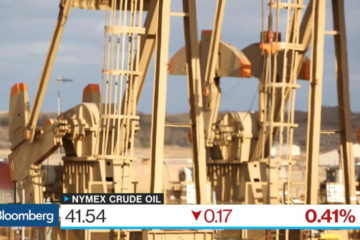Goldilocks Farm Weather Makes Hedge Funds Most Bearish on Record

©2015 Bloomberg News
NP7TSVSYF01T
(Bloomberg) — Hedge funds accumulated the most bearish bet ever on crops from corn to soybeans after a mix of sunshine and rain created almost perfect growing conditions for U.S. farms.
Across the Midwest, the weather’s been dry enough to get fieldwork done, with enough showers to help seeds germinate and emerge. The Goldilocks scenario, where everything is just right, means spring seeding sped ahead of normal and yields could exceed government forecasts. Forecasts for the summer show temperatures will be near normal or a little cooler, further aiding crops, according to MDA Information Systems.
Good growing conditions prompted the International Grains Council last week to say that global production will be even bigger than previously estimated. Bountiful supplies mean that money managers last week almost doubled their bets on falling crop prices.
“We’re in an ideal growing and planting season,” Sameer Samana, a global strategist in St. Louis for Wells Fargo Investment Institute, which manages $1.6 trillion, said by phone May 28. “We have healthy inventories, and even though demand is growing, it’s not growing fast enough to get prices going in the opposite direction.”
Farm Bets
Combined positions across 11 agricultural products was a net-bearish holding of 208,561 contracts as of May 26, U.S. Commodity Futures Trading Commission data published three days later show. That’s the biggest since the data begins in 2006 and compares with 107,376 a week earlier.
As farmers produce more grain than the world needs, global food costs have plunged to the lowest since 2010, reducing expenses for companies including meat producer Tyson Foods Inc. The Bloomberg Commodity Index dropped 3.2 percent this year, while the Bloomberg Agriculture Index of eight farm products slumped 12 percent. The MSCI All-Country World Index of equities advanced 4.2 percent.
Part of what’s making conditions so favorable in the Midwest is El Nino, a weather pattern that’s formed because of warm ocean temperatures in the central Pacific. The phenomenon will bring mild temperatures and normal precipitation that will help plants throughout the growing season in the U.S. Corn Belt, Donald Keeney, an agricultural meteorologist at Gaithersburg, Maryland-based MDA Information Systems, said by phone May 29.
Plains Rains
The weather is not ideal everywhere. Excessive rain and some flooding in the Great Plains has fueled concerns about deteriorating quality and lower yields for wheat crops. In India, unseasonal wet weather means that production of the grain could drop to the lowest in seven years.
While combined global inventories of corn, soybeans and wheat are forecast to climb to a record, the ratio of stockpiles to world consumption will still be about 8 percent below the 30- year average, according to U.S. Department of Agriculture data. That shows expanding demand is still leaving supplies vulnerable to any weather shocks.
“Even though there are some positives with early planting, we’re not all that excited, and we’re not celebrating yet,” Susan Dambekaln, a portfolio manager at Capital Innovations LLC in Pewaukee, Wisconsin, which oversees about $1 billion, said by phone May 28. “The July and August conditions have a greater impact and will affect final yields. We’ve had a lot of extremes in weather even in the first part of this year, so that can certainly affect things as we get into the summer months.”
Brazil Crop
Growers are expanding production across the globe, creating more competition for U.S. exporters. Brazil is poised to have record soybean output, and Canada’s crop agency in May boosted its outlook for the nation’s wheat harvest. Farmers worldwide will gather 1.968 billion metric tons of grain in the 2015-16 season that starts July 1, the International Grains Council said May 28. That’s 1.1 percent more than forecast a month earlier.
The dollar will continue to appreciate against most major currencies over the next year, also eroding the appeal of U.S. exports, Aakash Doshi, a vice president at Citigroup Global Markets Inc. in New York, wrote in a report last week.
“Between the U.S. farmer and the South American farmer, there’s a whale-load of beans that have to come to market,” Jacquie Voeks, a senior-market adviser at Stewart-Peterson Group in Mahomet, Illinois, said by phone May 28. “Every opportunity that presents itself on beans is an opportunity to make a sale if you’re a producer. I don’t think there’s a choice. You can’t ignore a pile of beans the size of the wall of China.”
To contact the reporter on this story: Lydia Mulvany in Chicago at lmulvany2@bloomberg.net To contact the editors responsible for this story: Millie Munshi at mmunshi@bloomberg.net Steve Stroth







No Comment